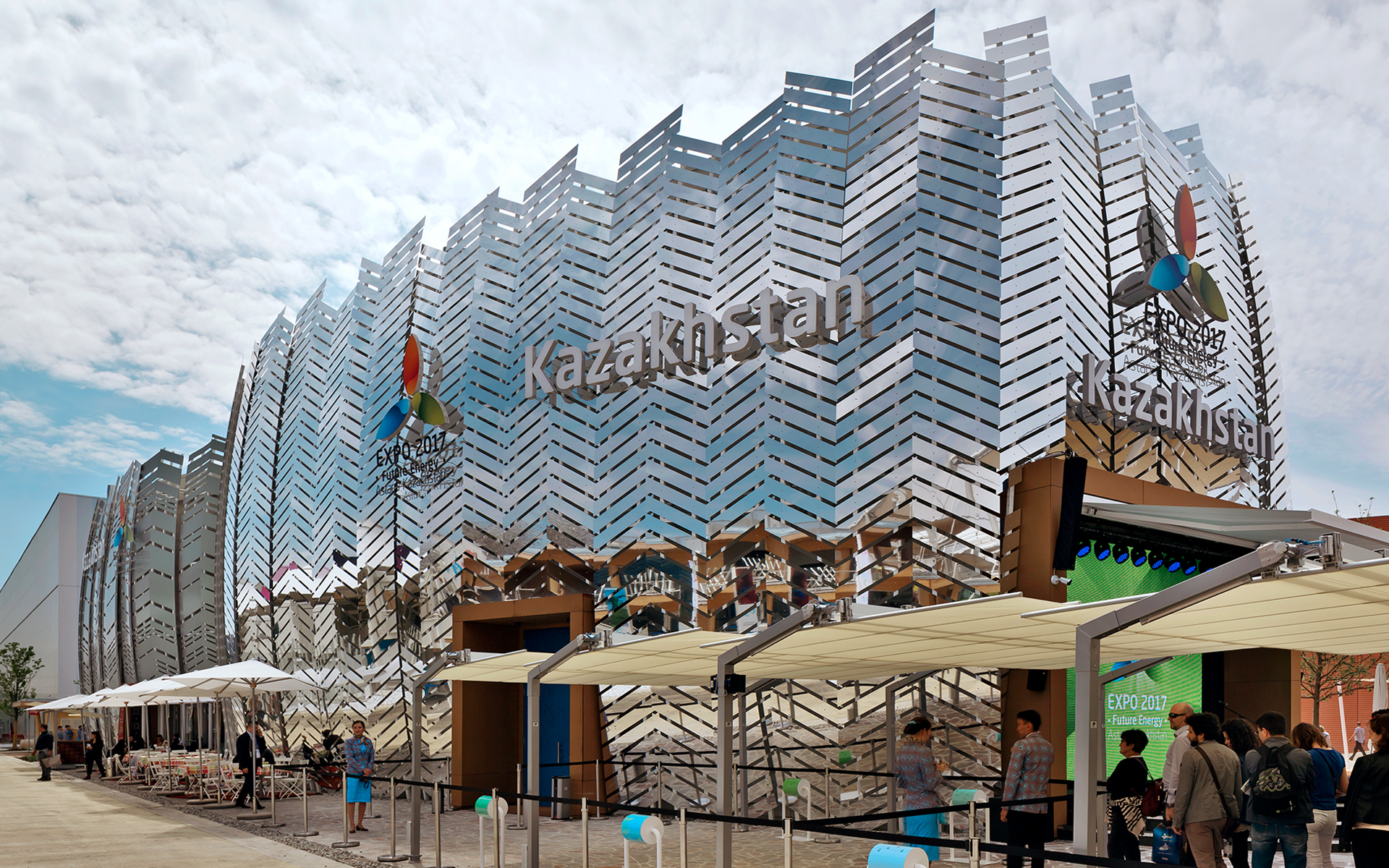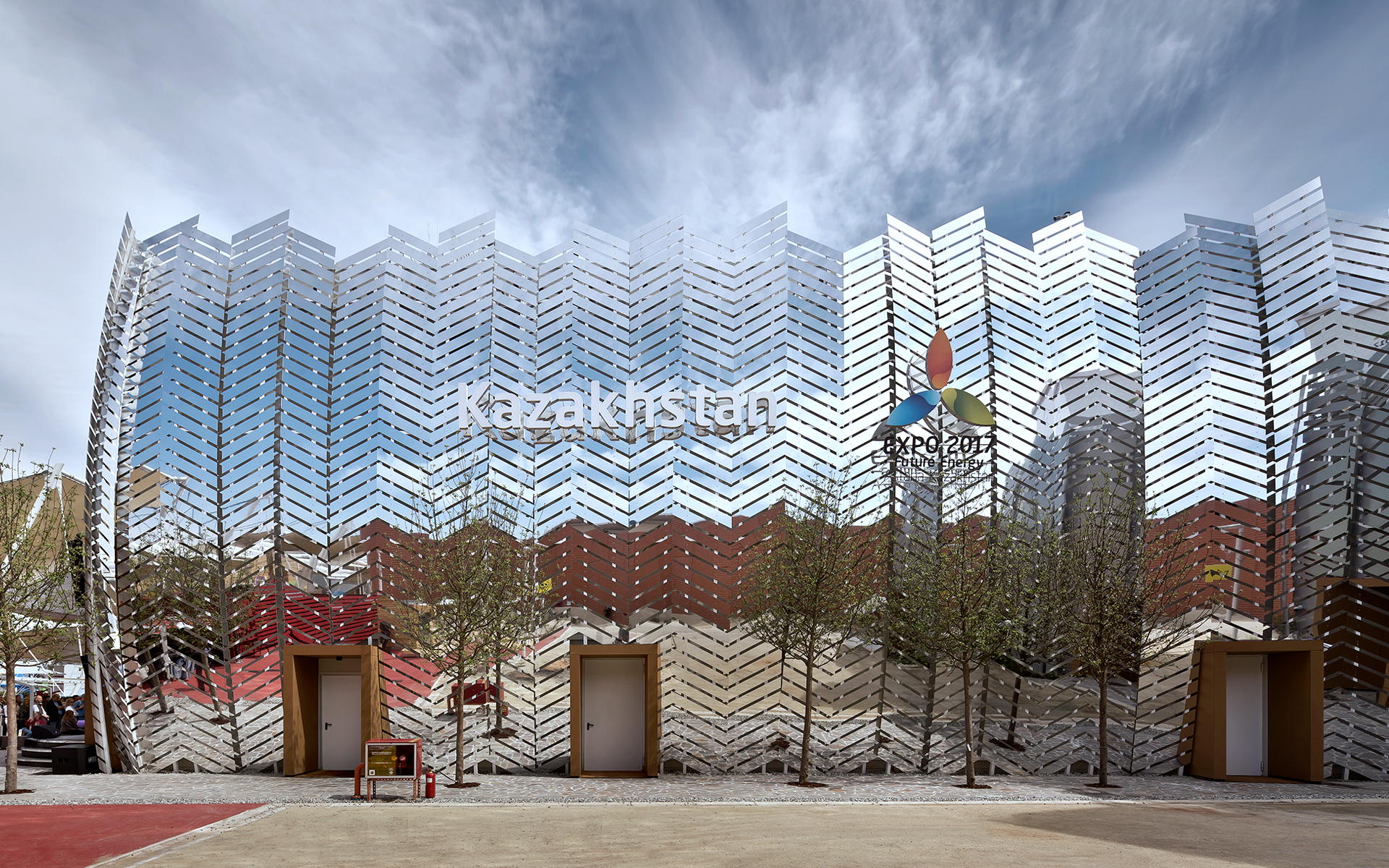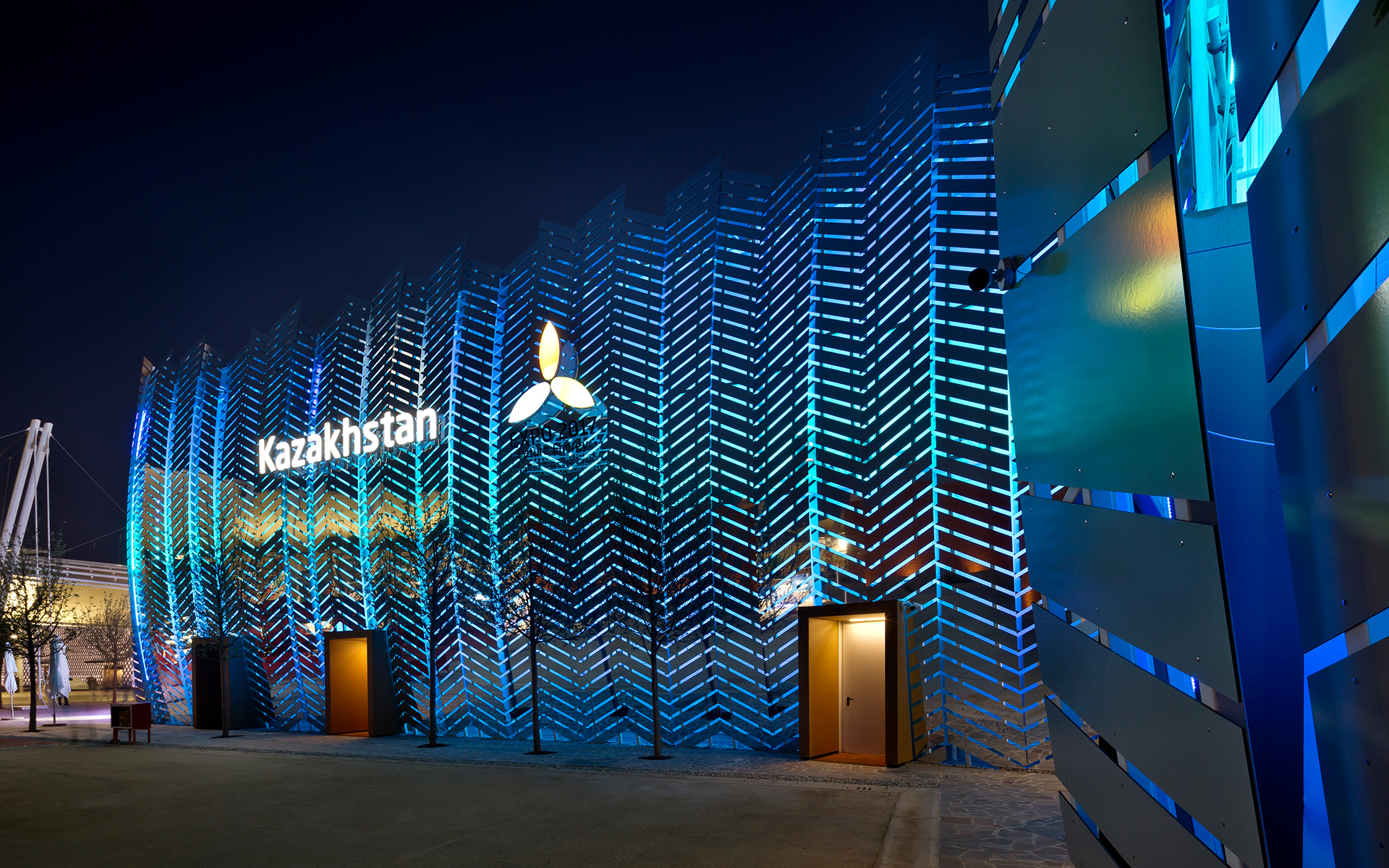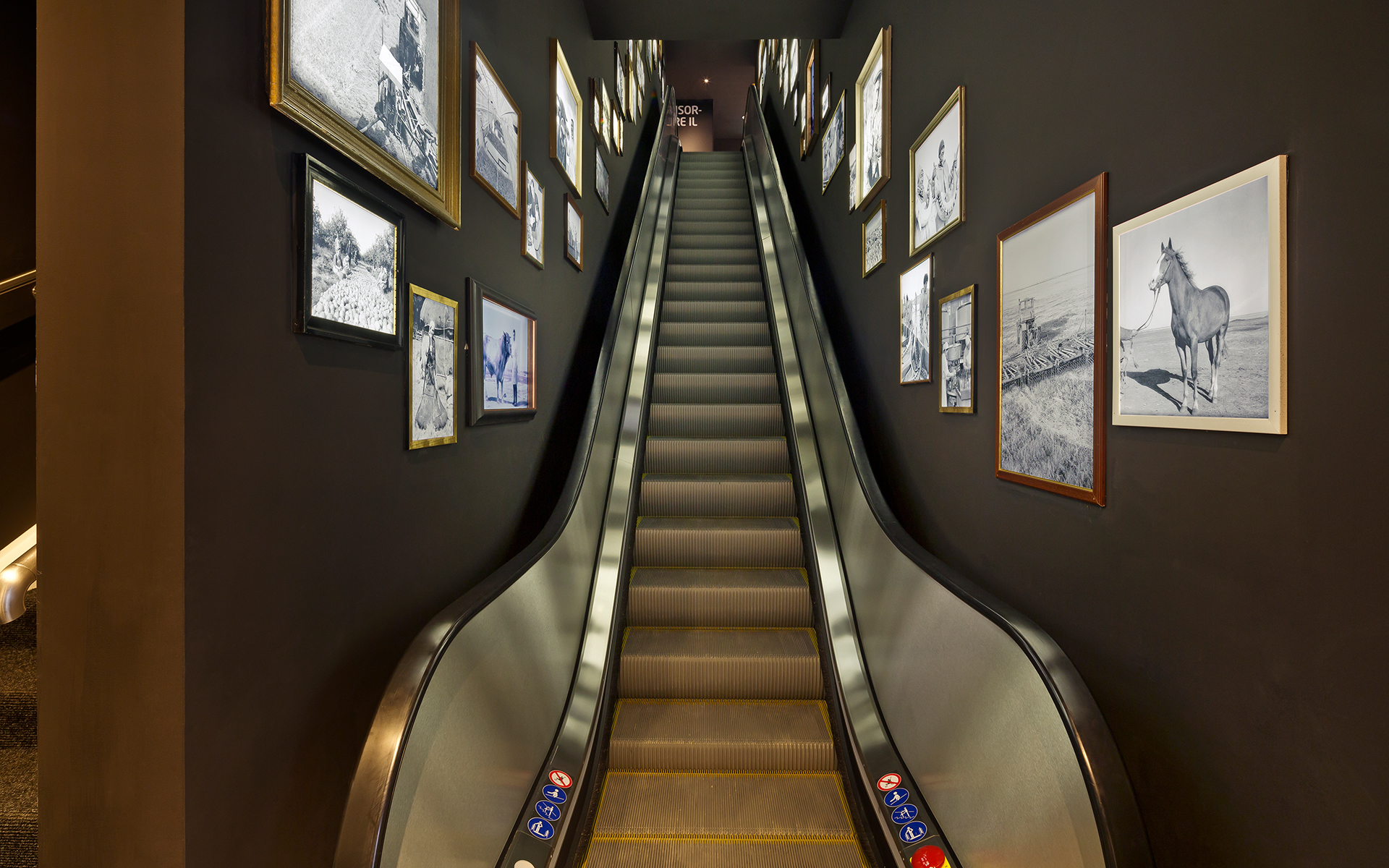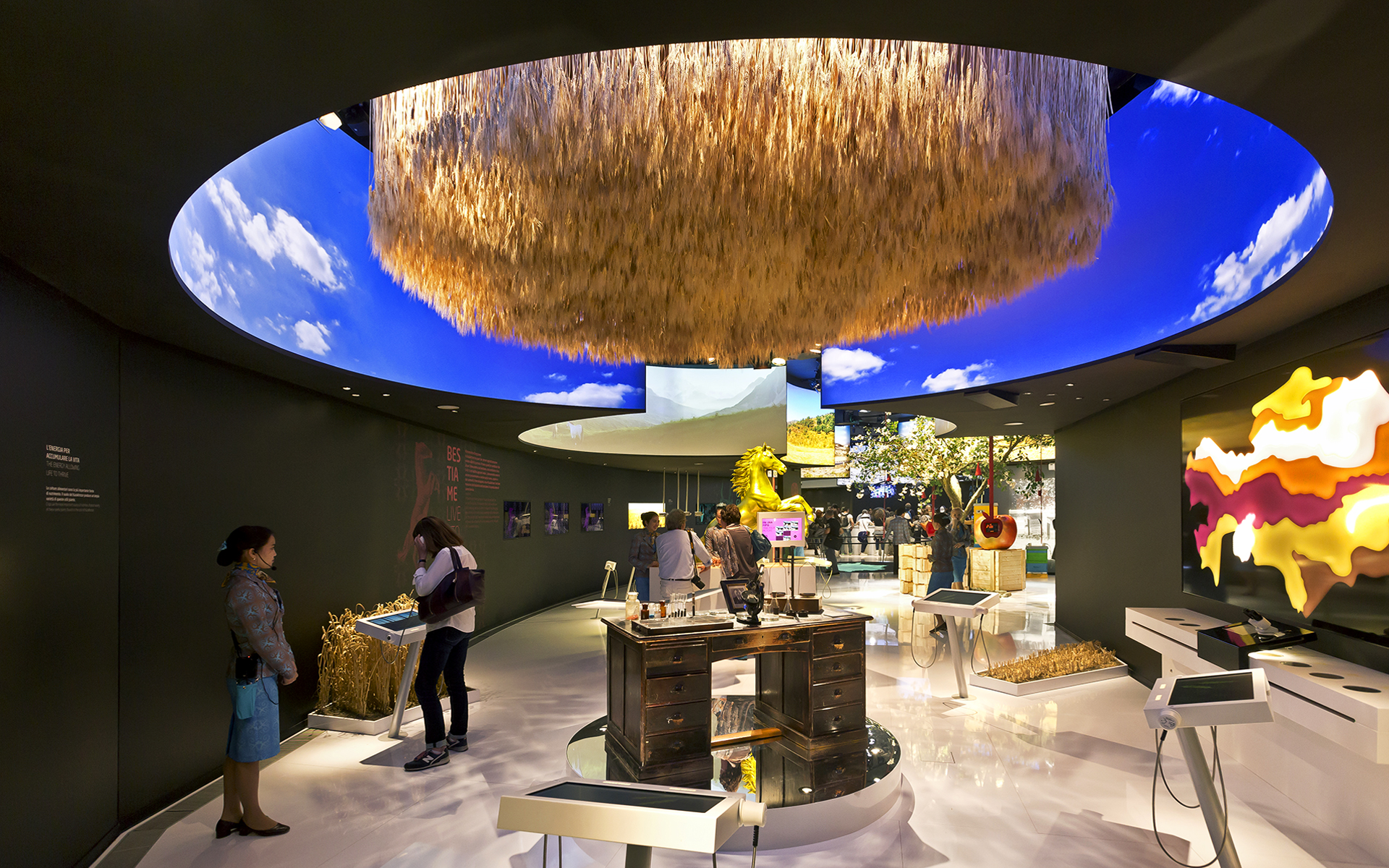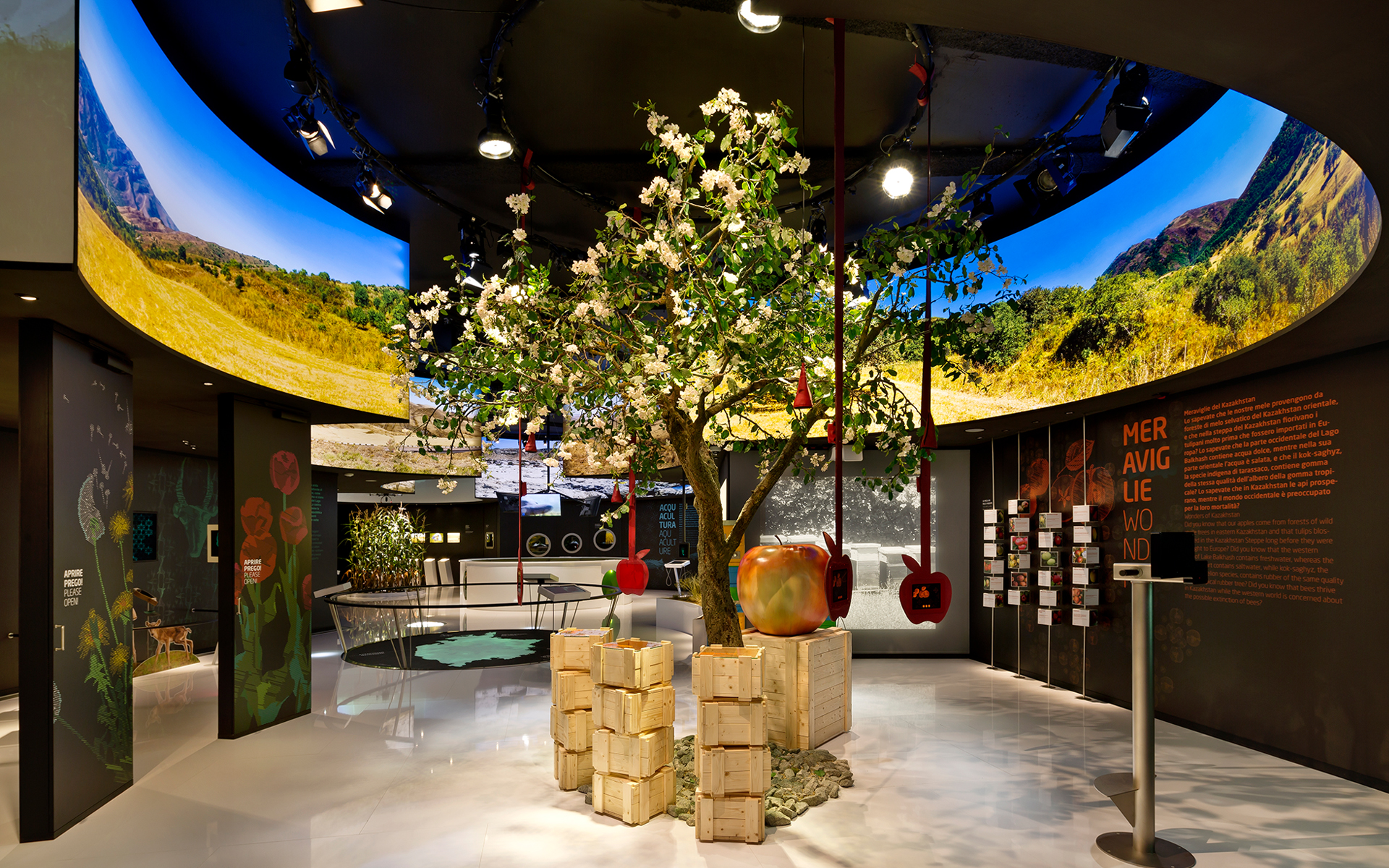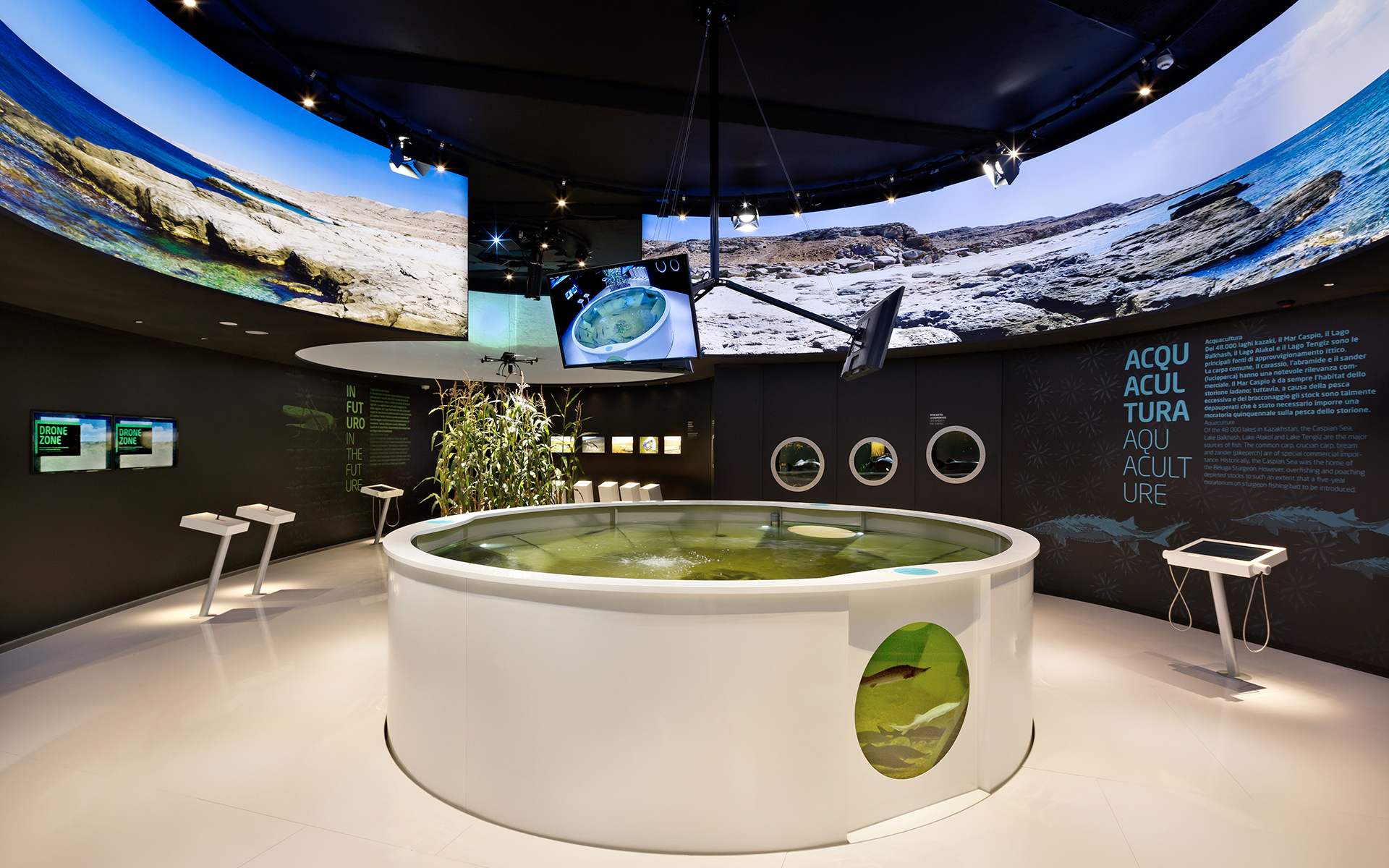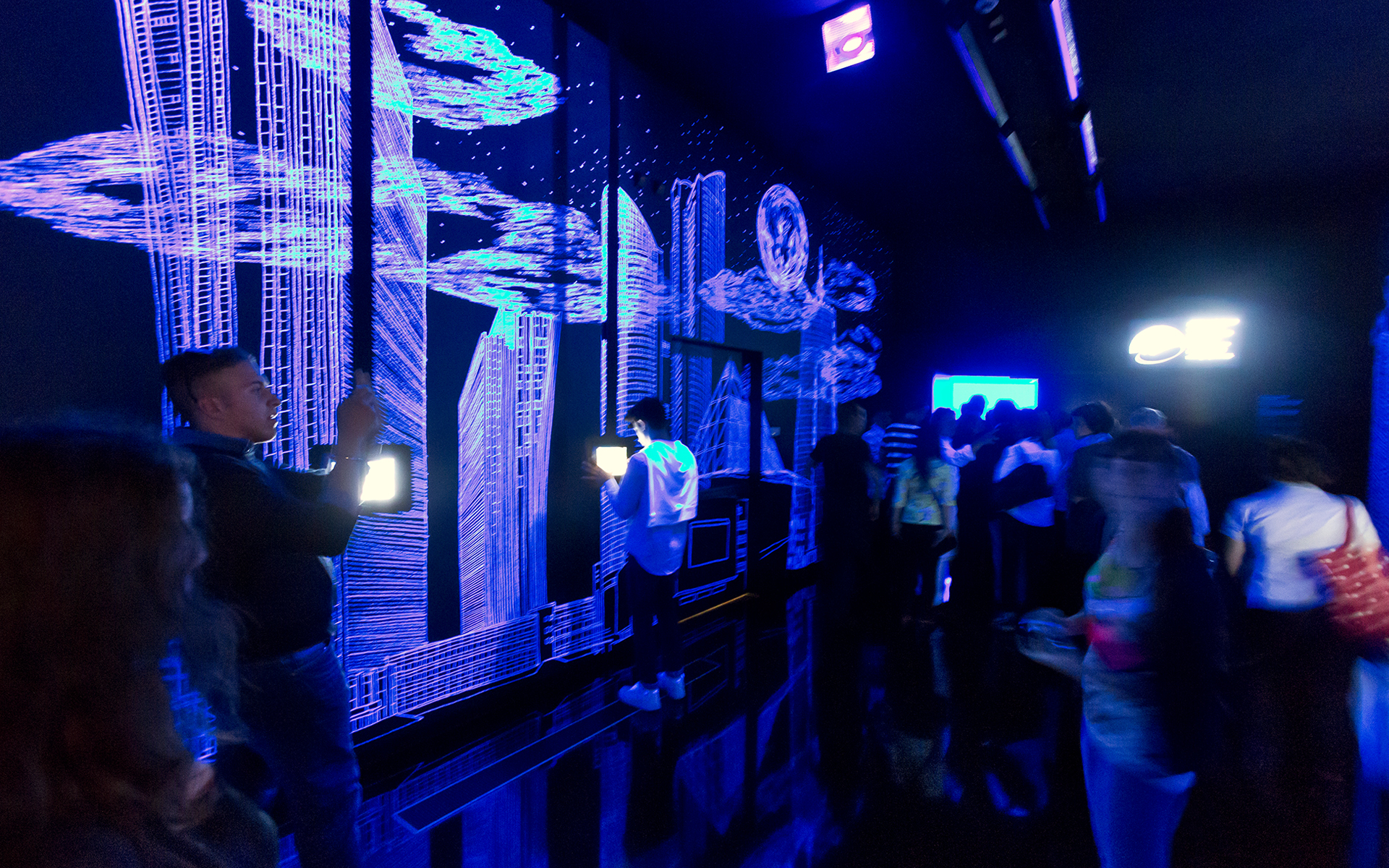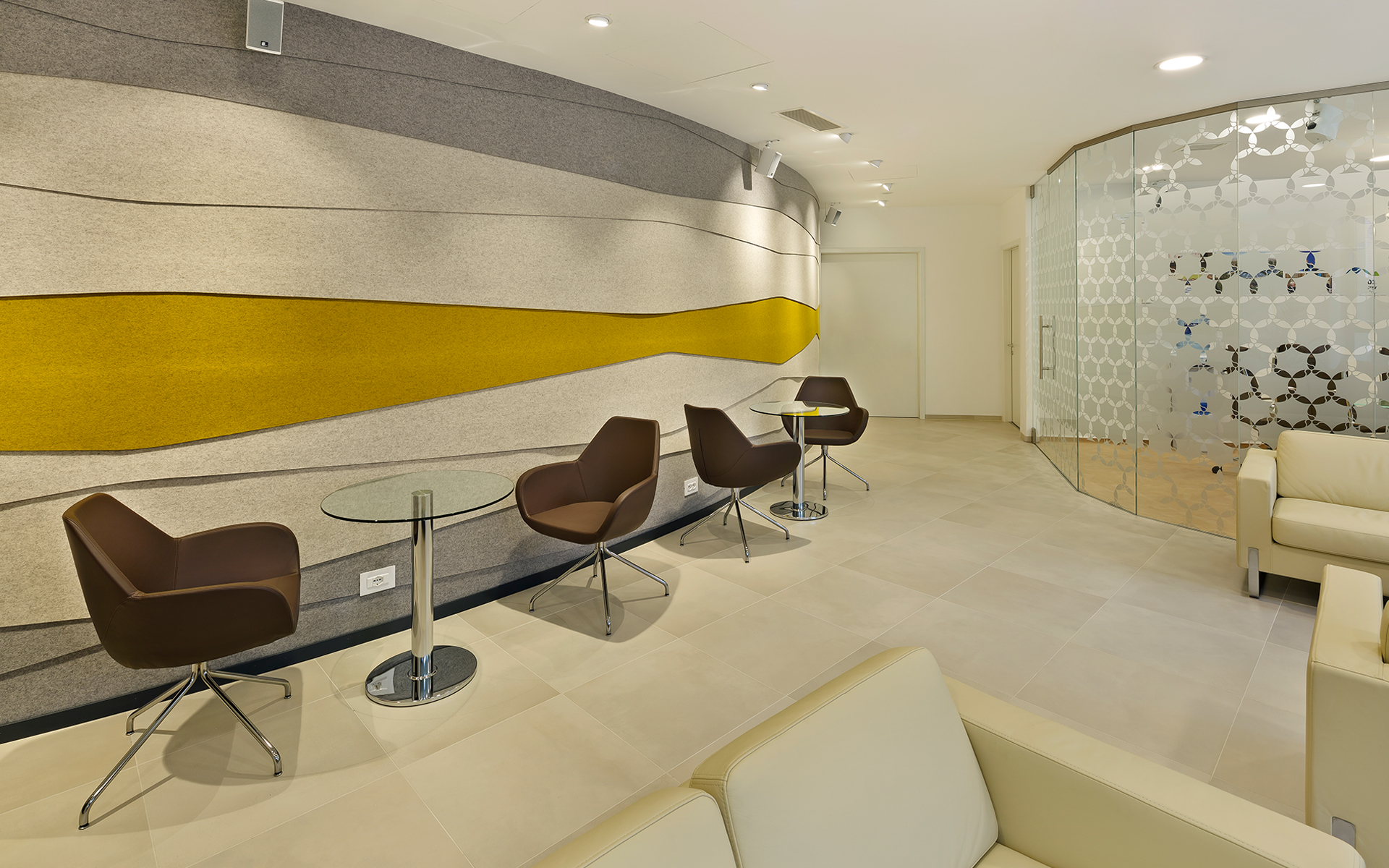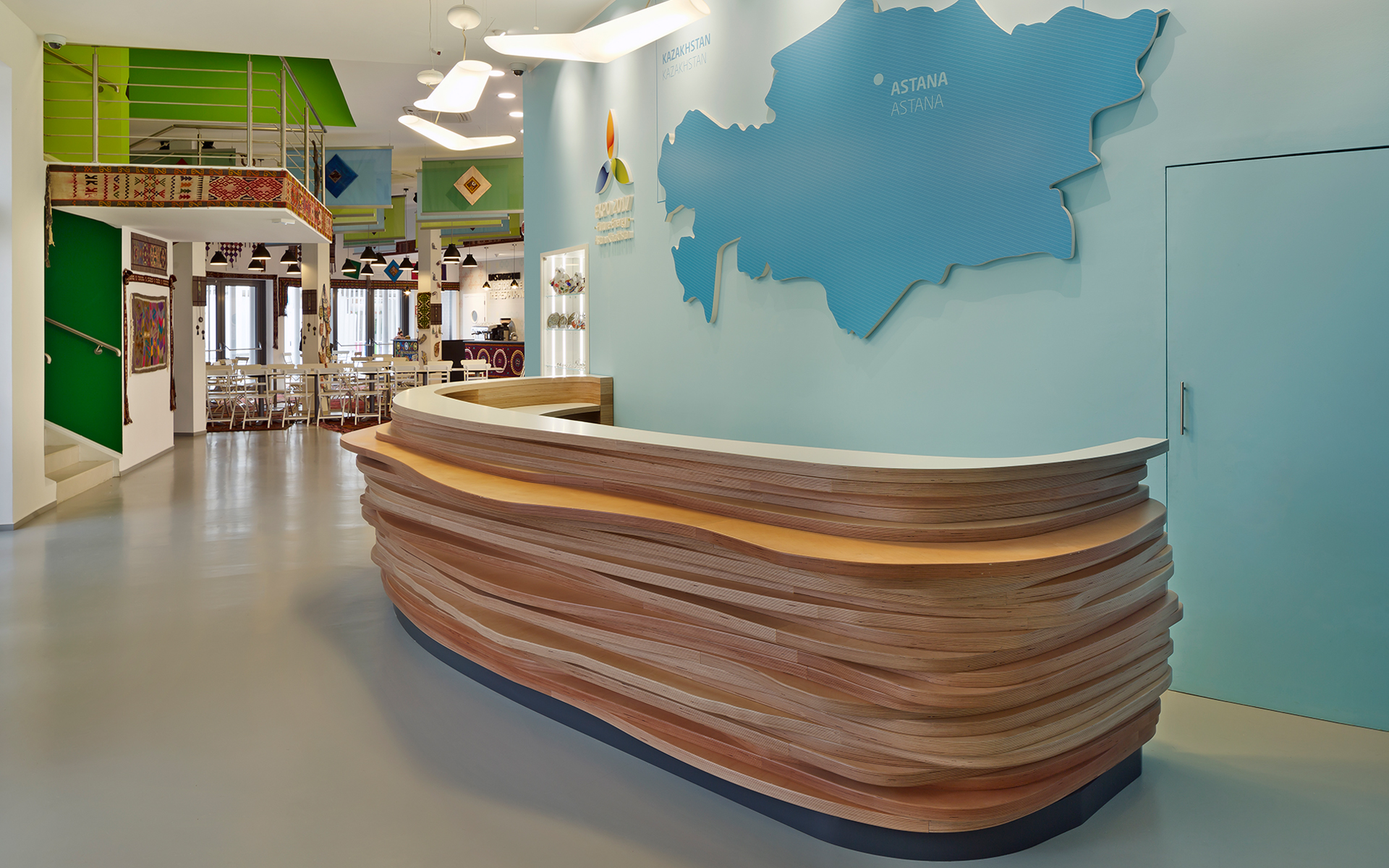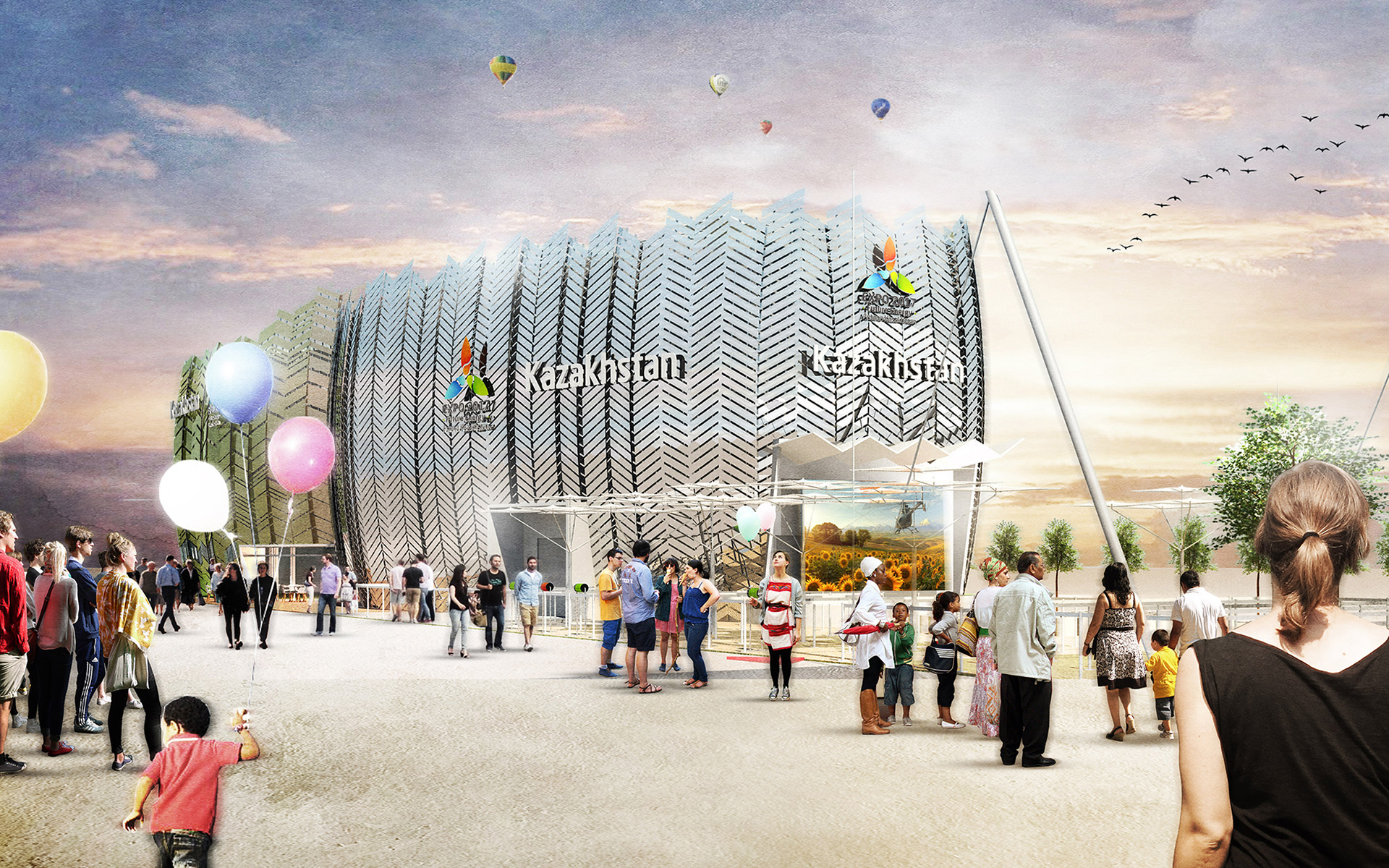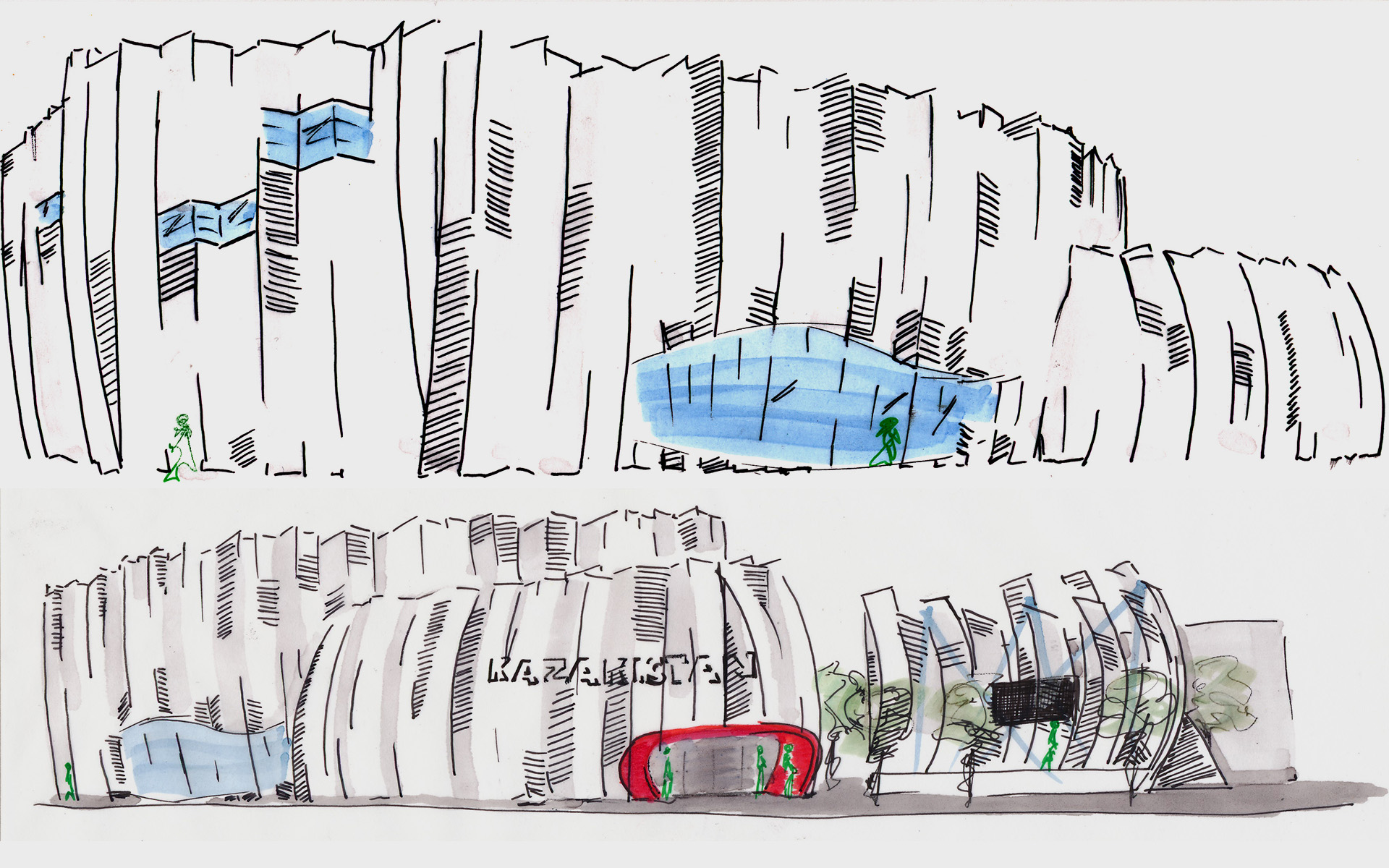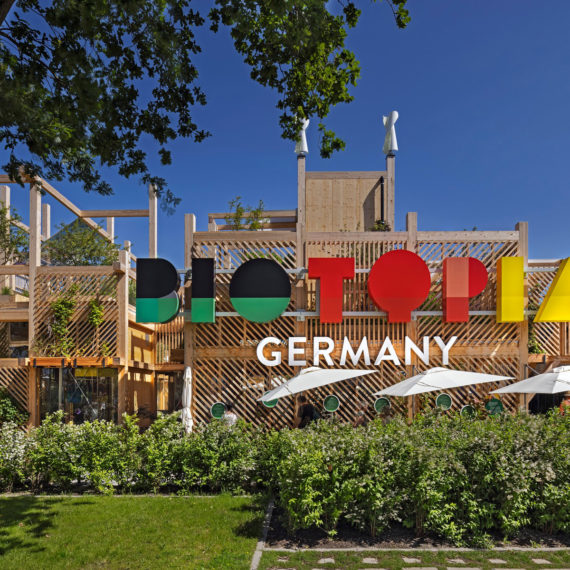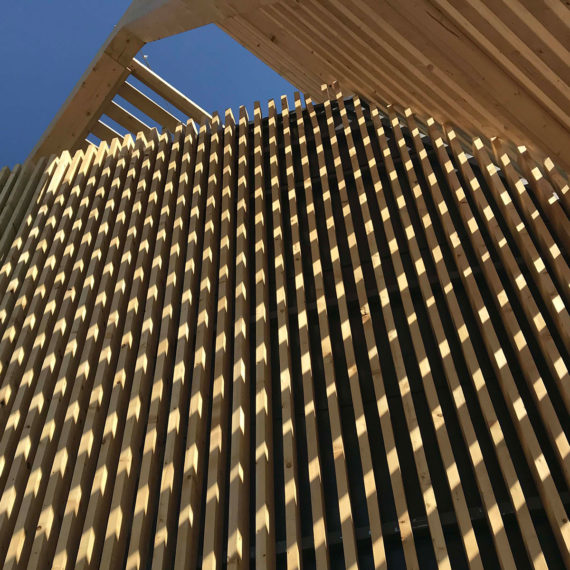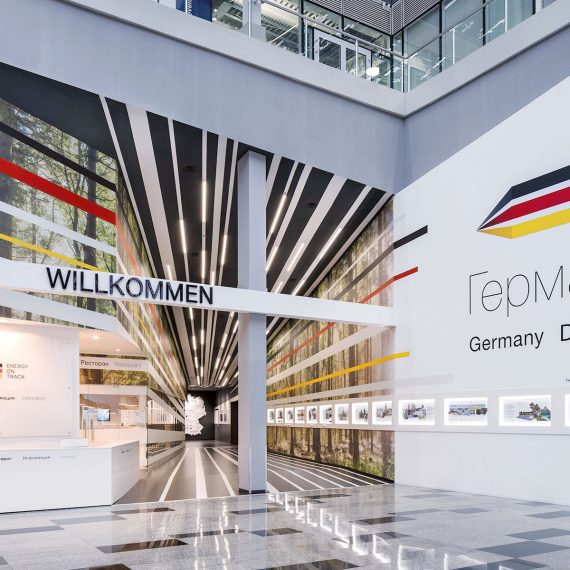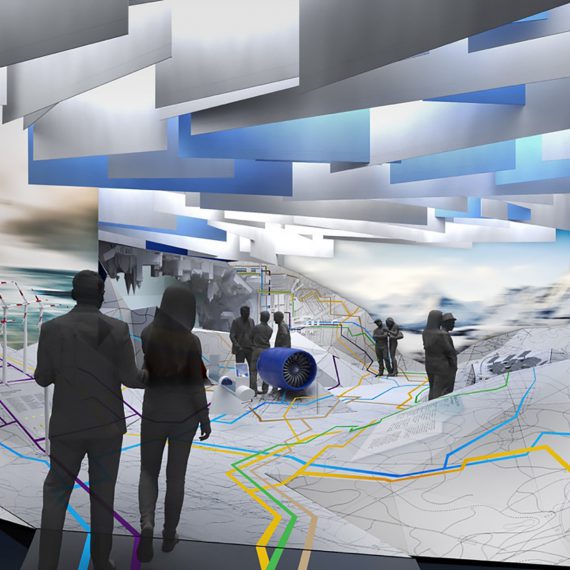KAZAKHSTAN AT EXPO 2015 MILAN
On 1 May 2015 World Expo 2015 opened its gates in Milan under the motto „Feeding the planet, Energy for Life“. With plenty of energy, gtp2 designed the Kazakhstan Pavilion in close cooperation with the creative agency facts and fiction from Cologne, who were responsible for the thematic content and acted as turn-key contractor for the job. It was a huge challenge, as we built for a foreign client in another foreign country, in Italy, and we could now write a book about intercultural relations and the related cultural differences. The pavilion was awarded the Expo Bronze medal for best theme development.
The ninth largest country in the world is known to us primarily as a place which launches into space from Baikonur, the largest spaceport in the world. But Kazakhstan has much more to offer than endless steppes, where returning astronauts are picked up and this is shown in the Kazakh pavilion at Expo 2015 in Milan. The Expo was all about food and agriculture: „Feeding the Planet – Energy for Life“ was the motto. With its vast agricultural lands and modern agricultural concepts, Kazakhstan can make a significant contribution to sustaining the world‘s expected 9.2 billion people by 2050.
Additional significance of the Central Asian country‘s appearance at Expo 2015 was created by the fact that the capital Astana will host the next World Expo in 2017. The motto is „Future Energy“; on this topic resource-rich Kazakhstan also belongs to the global heavyweights. The themed exhibition in the Kazakh pavilion was mainly dedicated to agricultural science in accordance with the Expo leitmotif. However, many aspects of the country were presented literally „en passant“ and were quite new for the majority of the Western World Expo visitors. Who knows, for example, that the original home of the humble apple is the Tian Shan Mountains near the ancient capital of Almaty in southern Kazakhstan?
The Kazak Pavilion presented itself with a striking form and a strong visual impact in order to shine brightly in the surrounding Expo architecture of covered walkways. Two similar but contrasting pavilion sections covered the maximum allowable area with a plan shaped with overlapping radial segments which reflected the natural forms of feathers (referring to the eagle, one of the national symbols), scales or leaves and also reminded of the design of the logo of Expo 2017. The pavilion was designed to create a unique and distinctive image, giving a sculptural feel with soft and flowing shapes mixed with structure, texture and colour.
The design was a mix of hightech ambitions with references to ecological and sustainable architectural trends. The pavilion was large and spectacular without being pretentious. It showcased the aspirations of a new emerging major player in the league of large and significant nations. Kazakhstan presented itself with pride and style in the heart of Italy, one of the world’s acclaimed design and style icons. The design took its inspiration from traditional Kazak notions, giving a sense of space and freedom and using national symbols and colours. The facade elements soared upwards, creating a positive and optimistic image, that of modern Kazakhstan.
The visitor‘s journey started in the preshow. Here a sand painter drew the most important historical stages of development of the country up to the point of today‘s independent republic. Following this, the gate to the exhibition opened beginning with an escalator ride through a gallery of agricultural photographs from the 1950s and 1960s. The atmospheric black and white photos were discovered by facts and fiction while carrying out research at the National Archives. Four of them suddenly seemed to come alive á la „Harry Potter“ and directly welcomed the visitor.
Having arrived at level one, the visitor got a first impression of the exhibition arranged in six rotundas. The glossy white floor contrasted with the black walls that showed the graphics. Each rotunda had a central object dedicated to a main theme. The rotundas were formed by high-resolution 360 ° motifs, which also contributed a substantial part to the lighting mood.
As one of the largest wheat exporters in the world, this topic marked the start of the exhibition. At the centre was the original writing desk of the Kazakh agricultural scientist Alexander Barayev, one of the great agricultural reformers of modern times. His desk was placed under a „heaven-like“ upside down wheat field, symbolising the tough climatic conditions through which a constant wind blows. The harsh conditions of a continental climate was Barajew‘s main field of research. He realised that the brutal Soviet method of land reclamation would in a short time lead to substantial soil erosion. His ploughless tillage farming methods prevents this and ensures high yields even at temperatures ranging from minus 40° in winter to plus 40°in summer. An interactive book provided information about Barajew‘s life. An interactive herbarium presented Kazakhstan‘s main crops. A real microscope medially connected to a map of Kazakhstan gave a look at the different soils of the country in detail.
The second rotunda was dedicated to livestock, which has traditionally played a significant role in this former nomadic country. At the centre of this rotunda was a golden statue of a rearing horse. The horse has always been at the centre of nomadic life. Even today, the horse is the most important working animal in Kazakhstan, not only as a mount but also as a source of meat and dairy. Fermented horse milk known as kumys is the country‘s national drink. Health and even therapeutic benefits are attributed to it. The tart, slightly alcoholic beverage is largely unknown to us. This changed with the visit to the pavilion because everyone who was willing and courageous could try a sample of the „sparkling wine of the steppe“. Each response, could be captured at a „selfie station“ and sent as postcard greeting to friends.
An apple tree formed the focus of the third rotunda. At interactive stations visitors discovered that Kazakhstan is the original home of all the world‘s cultivated apples. Using interactive iPads 360°, visitors were invited to take an expedition to the ancient apple forests of the Tian Shan Mountains. Another theme was the biodiversity of the many still completely pristine landscapes. The worldwide concern over bee depletion plays no role in Kazakhstan. The highly rated Altai honey is from an ecological point of view one the highest quality products in the country. Two other stations also amazed visitors: Who knows, for example, that the home of the tulip is not Holland, but rather the Central Asian steppe? And – though barely imaginable for Europeans – they are wonderfully fragrant. The original tulip fragrance can be sampled at an olfactory station. Lake Balkhash is one of Kazakhstan’s most peculiar natural wonders, as this contained desert lake features half fresh water and half brine. Visitors could explore the unique lake with an interactive laser scanner.
An interactive floor relief of the Aral Sea formed the central exhibit of the “Ecology” rotunda. The large-scale relief served as a screen for the dramatically changing water levels of the Aral Sea from 1960 to the present day. The surroundings rotated so visitors could navigate through the years and experience the lake drying out in quick motion. The installation also showed the returning water level in the northern lake after Kazakhstan‘s construction of the Kokaral dam. Visitors discovered the background to this ecological disaster at the „SOS“ column. Another environmental issue was the protection of the unique Saiga antelope which came close to extinction through ruthless hunting in the 1990s. The steppe is a habitat of utmost importance to Central Asia. With interactive stations and three-dimensional viewers the fauna and flora of this vast nature reserve could be explored.
The „Aquaculture“ rotunda offered a genuine Expo sensation: The „sturgeon petting zoo“ allowed visitors to make close contact with one of the oldest living things on earth. The peaceful „living fossils“ have inhabited the planet for 250 million years. They swam in an open pool with a diameter of four metres. They have no fear of people and even love to be petted. The sturgeon is most famous for its caviar, one of the most expensive foods in the world. Various types of caviar and their high prices were displayed in interactive showcases. The value of caviar almost led to the extinction of the Beluga sturgeon in the Caspian Sea. A general fishing moratorium in the neighbouring countries should ensure future stocks. Moreover, an installation showed a new method of caviar production in which the fish do not have to be killed. Other interactive showcases were dedicated to other creatures beneath the water‘s surface. Commercially bred fish such as pike, carp and pikeperch were presented as projections that seemed to float freely in space.
A realistic corn field was at the centre of the sixth and final rotunda. Above it a camera drone hovered with rotating rotors. Only on closer inspection did the visitor note that the field was infested by a swarm of locusts. Locusts are a serious threat to crops in Central Asia. The exhibition showed how the pests could be effectively controlled in an environmentally friendly way using drone monitoring, biological pesticides and new spray techniques. There was also a game station where visitors could pilot a drone themselves, and discover and map out the affected areas with their remote-controlled aircraft.
Show preparation: At the end of the exhibition a waiting area prepared for the main show. In this UV-illuminated room, visitors were confronted with outline representations of the capital Astana‘s most significant buildings. iPads with interactive 360° panoramas enabled a virtual tour through the new capital. The perspective was easily changed by moving the tablets. Overall, there was a choice of nine different locations of prominent places in Astana
Main show: Finally, the gates opened for the main show. Visitors entered a domed hall with 15 m diameter. Upon entering, each guest received a pair of special 3-D glasses. There were comfortable chairs to accommodate up to 80 people in the theatre. Following the 3D opening credits, which underlined the main aspects of the exhibition so far, the movie started. It was dedicated to the upcoming “Future Energy“ Expo in Astana.
The energy of the future will be regenerative, therefore the journey began on the surface of the sun. Accompanied by 3D sun rays, visitors made a spectacular 5 minute trip to Kazakhstan and into the future in 2017. They seemed to fly through scenes that emotionally represent the country‘s wealth of natural and agricultural resources. The journey ended in the future at EXPO 2017 in Astana. The movements of the so-called „TumbleDisc“, synchronised to the camera, conveyed a realistic flight experience. In contrast to conventional motion simulators, guests experienced a gentle, pleasant feeling of gliding through the air. This impression was possible due to new technology replacing the usual hydraulic systems with a spindle driven mechanism. Rendered in 8k resolution, the photo-realistic movie was played back on the 220° stereo projection dome. A 64 channel sound system perfectly reproduced the soundtrack which could be heard with precision from every seat. The guests left the main show via a space where a 30 m² photo-realistic picture of the Expo Plaza in Astana showed that they had now arrived „on target“ in the future. A staircase led back to ground level where a large model of the Expo 2017 site provided a realistic preview of the coming show in Astana. Visitors could now decide whether to continue their expedition and discover traditional Kazakh culinary delights in the restaurant, or simply wander back to the central Decumanus Boulevard via the Apple Tree Avenue in the outdoor landscaped garden space.




